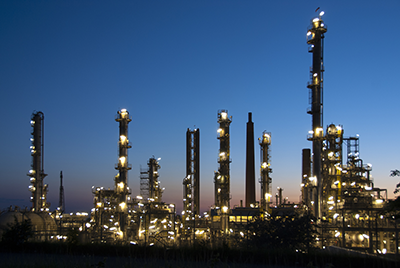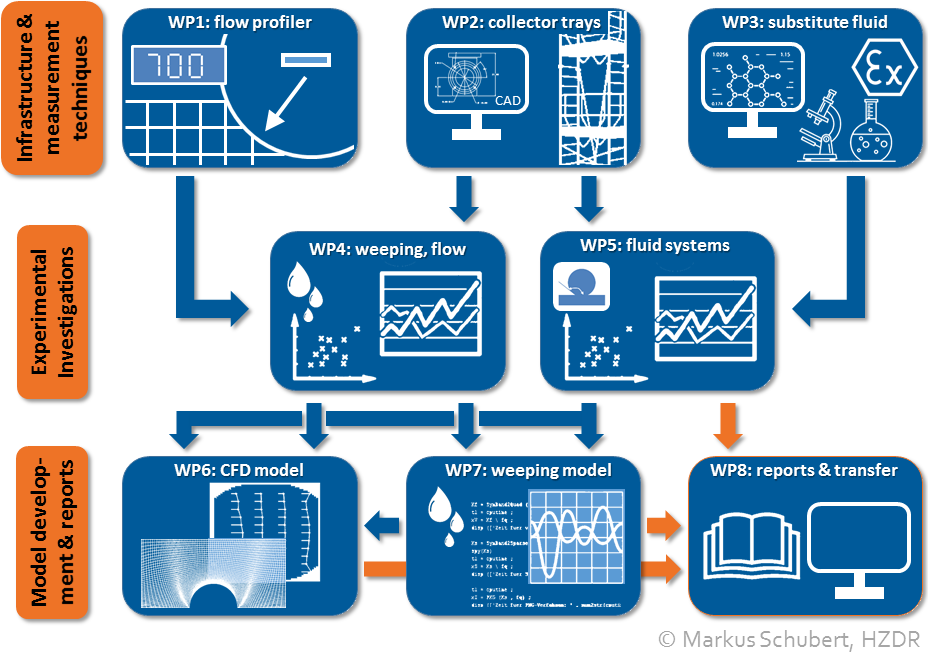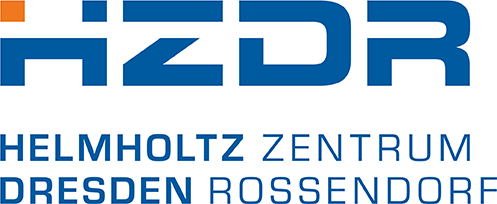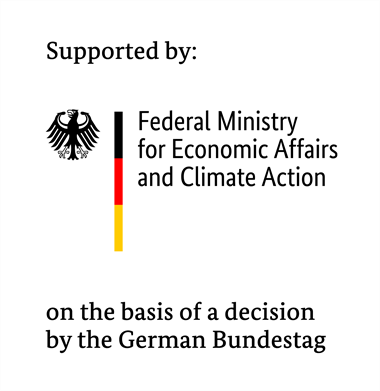Motivation and Objective
Tray columns are applied in the chemical industry and serve for the thermal separation of multicomponent mixtures. Due to the increasing energy supply from renewable sources a more flexible operation of such apparatuses is required. However, since high separation efficiencies need to be maintained in the associated partial load and overload scenarios, the design process becomes a challenging task. Particularly the design of high performance trays with fixed and/or push valves suffers from missing tools and methods for estimating the influence of the tray design on the complex two-phase flow of liquid and vapor as well as the operation limits.
 © Fotolia | Wolfgang Jargstorff
© Fotolia | Wolfgang Jargstorff
Therefore, the present iGF-project aims at closing this gap and extensive experimentation will be conducted in order to characterize the two-phase flow on valve trays in dependence of valve type, valve number, valve arrangement as well as operating conditions and fluid systems. Based on the experimental results models are subsequently developed and will allow for facilitating the design process of high performance trays with fixed and push valves in practice.
Methodology and Project Structure
The project is structured in three methodological steps according to the following scheme and combines the core competencies of the three participating research units by carefully coordinated work packages.

Though closely cooperating, each research unit is working on an individual subproject. Details on the subprojects can be found via the corresponding items in the menu.
The project is additionally supported by an accompanying committee that is composed of experts from well-known partners in the industry. The committee discusses recent results with the researchers in the frame of semi-annual meetings and suggests options for further in-depth investigations within the work plan.




